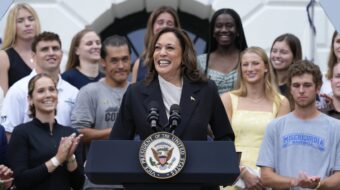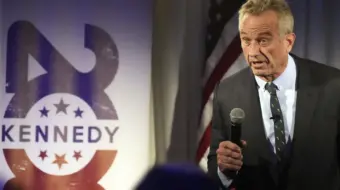WASHINGTON – The grassroots movement that marched and rallied in defense of affirmative action over the last decade hailed the Supreme Court’s 5 to 4 decision, June 23, upholding race-conscious admissions programs at the University of Michigan (U-M) Law School. Wade Henderson, executive secretary of the Leadership Conference on Civil Rights (LCCR), called it “a great victory for America.”
It was the first ruling on affirmative action since the Supreme Court’s Bakke decision in 1978 and Justice Sandra Day O’Connor, writing for the majority, cited Justice Lewis Powell’s opinion in that case: Racial diversity is a “compelling state interest” that can justify the use of race in university admissions, he wrote. “Today,” she wrote, “we hold that the law school has a compelling interest in attaining a diverse student body. … [It] is at the heart of the law school’s proper institutional mission.”
She quoted favorably from the U-M’s brief that a “critical mass” of African American, Latino and American Indian students are needed, not a “token” number. She concluded, “In order to cultivate a set of leaders with legitimacy in the eyes of the citizenry, it is necessary that the path to leadership be visibly open to talented and qualified individuals of every race and ethnicity.” She was joined by Justices Ruth Bader Ginsberg, David Souter, John Paul Stevens, and Stephen Breyer.
In a separate decision, written by Chief Justice Rehnquist, the court voted 6 to 3 to strike down the U-M’s undergraduate admissions program in which minority students were awarded points to help insure diversity. O’Connor and Breyer voted with the right-wing bloc in that decision.
Ginsberg defended Michigan’s undergraduate admission program. “The racial and ethnic groups to which the college accords special consideration … continue to experience class-based discrimination to this day,” Ginsberg wrote in her dissent. “The stain of generations of racial oppression is still visible in our society, and the determination to hasten its removal remains vital.”
Henderson told the LCCR news conference crowded with civil rights leaders that the law school ruling is a “truly momentous decision in upholding the compelling national interest in insuring diversity.”
Marisa Demeo, a leader of the Mexican American Legal Defense & Education Fund, said, “An unprecedented chorus of voices spoke out in support of affirmative action. The court heard that voice. Overall, the court reaffirmed that race can be used as a criteria in its admissions programs. It should help us in preventing the resegregation of education.”
The law school decision was seen as a major defeat for George W. Bush, who delivered a speech on Dr. Martin Luther King Jr.’s birthday urging the Supreme Court to use the two Michigan lawsuits to overturn affirmative action as “unconstitutional.”
Yet, in another attempt to “revise history,” Bush hypocritically greeted the Supreme Court’s June 23 ruling. “I applaud the Supreme Court for recognizing the value of diversity on our nation’s campuses,” he said.
Communist Party Executive Vice Chair Jarvis Tyner said, “We have to do everything we can to defeat George W. Bush and break the ultra-right’s stranglehold on Congress in the 2004 election. Bush is determined to stack the Supreme Court with more ultra-rightists like Scalia and Thomas and roll back every civil rights gain we have made over the past 50 years.”
It was a broad cross-section of the American public who showed support for the U-M policies – civil rights activists, students, trade unions, elected officials, universities and even the military and some corporations.
Lisa Navarette, a spokesperson for the National Council of La Raza, greeted the law school ruling. “But we are still outraged by the Bush administration’s role” in supporting the plaintiffs, she told the World.
Nicholas Centino, director of the U.S. Student Association’s Student of Color Campus Diversity Project, told the World he attended the huge April 1 demonstration in front of the Supreme Court the day oral arguments were heard in the Michigan lawsuits. “I can’t stress enough the fact that affirmative action was legally upheld,” he said. Centino urged a continued fight since affirmative action opponents see the decision as “a call to arms.” He said, “As students, we must not only stop them, we must go on the offensive ourselves.”
United Auto Worker President Ron Gettelfinger said the law school decision “sends the powerful message that we all benefit from diversity in our schools, workplaces, military and society as a whole. Although we’re disappointed the court did not uphold Michigan’s undergraduate admissions as well, we’re pleased that the court provided … a ‘road map’ for using affirmative action in a sensitive, individualized way. The UAW is proud to have been part of the remarkably diverse coalition.”
Kim Gandy, president of the National Organization for Women, warned that the one-vote margin for the law school plan “is a brutal reminder of the court’s delicate balance and what is at stake with the next resignation from the court.” NOW’s “Save the Court” mobilization, she added, “will press senators to confirm justices who will uphold civil rights laws.”
The author can be reached at greenerpastures21212@yahoo.com











Comments